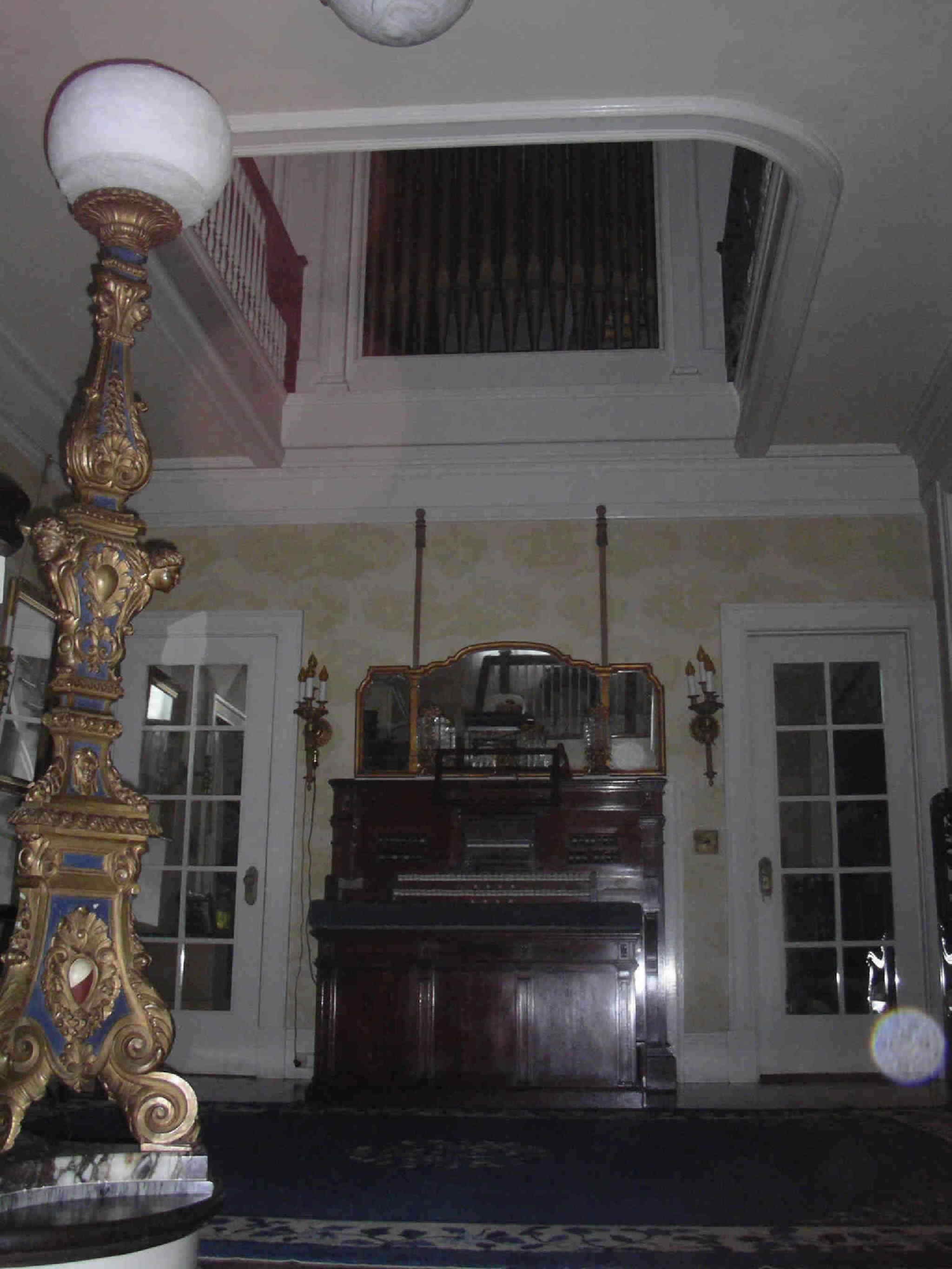John D. Coleman Residence
Portland, OR
Opus 1430


Great
8 Open
Diapason
8 Viol D'Orchestre
8 Clarabella
4 Flute d'Amour
8
Clarinet
Harp
Tremolo
Sw to Gt 16-8-4 |
Swell
8 Stopped
Diapason
8 Viol D'Orchestre
8 Muted Viol
8 Vox Celeste
4
Flauto Traverso
8 Oboe
Harp
Tremolo
Sw to Sw 16-4 |
Echo
8
Flute
8 Quintadena
8 Vox Humana
Tremolo |
Pedal
16
Bourdon
8 Bass Flute
8 Stopped Flute
Gt to Ped 8
Sw to Ped
8 |
Automatic Roll
Player
"The home has
remained within our family since it was built by my great-grandfather John D.
Coleman in 1915.
"The organ continues
to function, however it could use a little tuning. There are also about
400 rolls that can be played
on the organ's player just above the
keyboards. The smallest pipe is about 3" tall by 1/4" diameter and the
largest pipe is
over 7' tall by 1' square. The smallest glass chime is
1-3/4" by 3" and the largest is 3-1/2" by 20".
"John D. Coleman did
not play the organ himself, so having the rolls allowed him to entertain his
guests as though he did.
He built the home around the organ as it main
centerpiece. After his death the home passed to his daughter, Elizabeth Coleman
Scott.
"Elisabeth's husband
was Leslie M. Scott, son of Harvey W. Scott, co-owner and editor of The
Oregonian newspaper from 1865 to 1910.
After Harvey's death in 1910,
his son, Leslie became vice-President of The Oregonian. Under
Leslie's tenure, The Oregonian
began to experiment with the
new technology called - Radio. About 1922, The Oregonian started
a radio station
called KGW and it broadcast several hours of news each
day. Somewhere along the way they got the idea to also
broadcast organ music.
For many months KGW had a direct phone
line from the radio station to our home, and microphones
located within
the two pipe chambers. Someone either played
the organ or mounted and played the rolls in real time broadcasts.
I
believe these occurred on Sundays."
 SourcesEstey
Opus List
SourcesEstey
Opus List
Harvey Scott
Back



